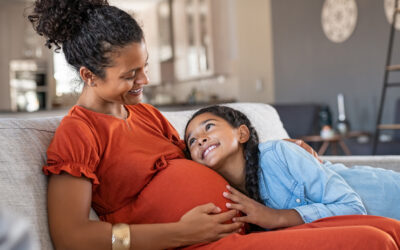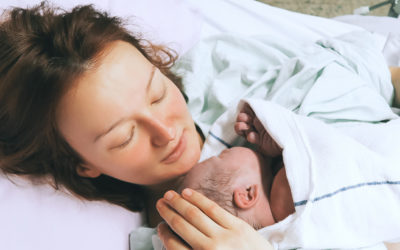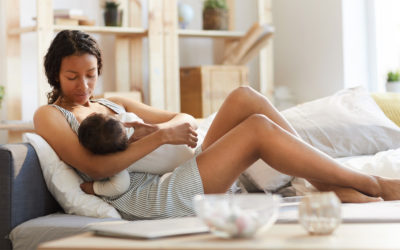Safe Sleep Tips
- Always place your baby alone, on his or her back, in a crib for every sleep time.
- Always use a firm, flat sleep surface. Car seats and other sitting devices, swings, wedges, and devices that position baby on an incline are not safe for routine sleep.
- Use a firm sleep surface with a firm crib mattress, covered by a fitted sheet. “A crib, bassinet, or portable crib/play yard that conforms to the safety standards of the Consumer Product Safety Commission and ASTM International (formerly the American Society for Testing and Materials) is recommended. In addition, parents and providers should check to make sure that the product has not been recalled. Cribs with missing hardware should not be used, and the parent or provider should not attempt to fix broken components of a crib, because many deaths are associated with cribs that are broken or have missing parts (including those that have presumably been fixed). Local organizations throughout the United States can help to provide low-cost or free cribs or play yards for families with financial constraints.” (from the AAP 2011 Policy Statement-SIDS and Other Sleep-Related Infant Deaths: Expansion of Recommendations)
- Room share, but do not bed share.
- Co-sleeping: This is when a parent and child sleep within a “sensory” distance of each other, meaning that each can tell that the other is near, by their touch, sight, or even smell. (Co-sleeping is sometimes also called sleep-sharing.) Room-sharing and bed-sharing are types of co-sleeping.
- Room-Sharing: This is when parents have a crib in the room with them, a bassinet or portable crib near the bed, a separate crib attached to the bed, or a similar arrangement.
- Bed-Sharing: This is when parents share their bed with their children (sometimes called the “family bed”). This is not recommended as a form of safe sleep. Various U.S. medical groups warn parents not to place their infants to sleep in adults beds due to serious safety risks. Bed-sharing puts babies at risk of suffocation, strangulation, and sudden infant death syndrome (SIDS). Studies have found that bed-sharing is the most common cause of deaths in babies, especially those 3 months and younger.
- Avoid smoke exposure during pregnancy and after your baby is born. There should be no smoking near pregnant women or infants. Set strict rules for smoke-free homes and cars. Eliminate second-hand tobacco smoke from all places in which children and other nonsmokers spend time.
- Because there is no evidence that bumper pads or similar products that attach to crib slats or sides prevent injury in young infants, and because there IS the potential for suffocation, entrapment, and strangulation, these products are not recommended.
- Don’t overheat or overdress your baby. Dress your baby in light sleep clothing. Keep the room at a temperature that is comfortable for an adult (between 68-72 degrees F).
- Breastfeeding is associated with a reduced risk of SIDS. If possible, mothers should exclusively breastfeed or feed with expressed human milk (i.e., not offer any formula or other non-human milk-based supplements) for 6 months, in alignment with recommendations of the AAP.
- Avoid commercial devices marketed to reduce the risk of SIDS. These devices include wedges, positioners, special mattresses, and special sleep surfaces. There is no evidence that these devices reduce the risk of SIDS or suffocation or that they are safe. The AAP concurs with the US Food and Drug Administration and Consumer Product Safety Commission that manufacturers should not claim that a product or device protects against SIDS unless there is scientific evidence to that effect. Do not use home cardio respiratory monitors as a strategy to reduce the risk of SIDS.
- Travel is one of the biggest causes of sleep disturbances to a baby in many ways. As you pack your bags to travel for holidays, remember to include what you’ll need to ensure a separate, safe sleeping environment for your baby while away from home. If you plan to stay in a hotel, ask in advance if they have cribs available that you can use in your room. Safe travels!
For More Information
Call 870-261-0286
Related Services and Conditions
Classes and Support
Birthing and Breastfeeding Class Having a baby is one of life’s most joyous experiences. You can count on the on the dedicated team at Forrest City Medical Center for family-oriented care that’s responsive to your needs and preferences. We offer birthing classes and...
Maternity Services
When your big day arrives, you can count on the dedicated team at Forrest City Medical Birthing Center for family-oriented care that’s responsive to your needs and preferences. We’ll make your special moment even more memorable with a private room, dedicated OB...
Breastfeeding
When you breastfeed, you not only provide the necessary protein, sugar and fat to keep your baby healthy, but you also give your baby protection from earaches, common colds and potentially serious diseases. As illnesses such as measles continue making headlines,...
Labor & Delivery
Labor & Delivery Suites The Family Center includes four birthing suites for labor and delivery, including a large suite for the birth of twins or multiple babies. Each suite provides a home-like environment with comfortable beds, new linens just for Maternity,...




